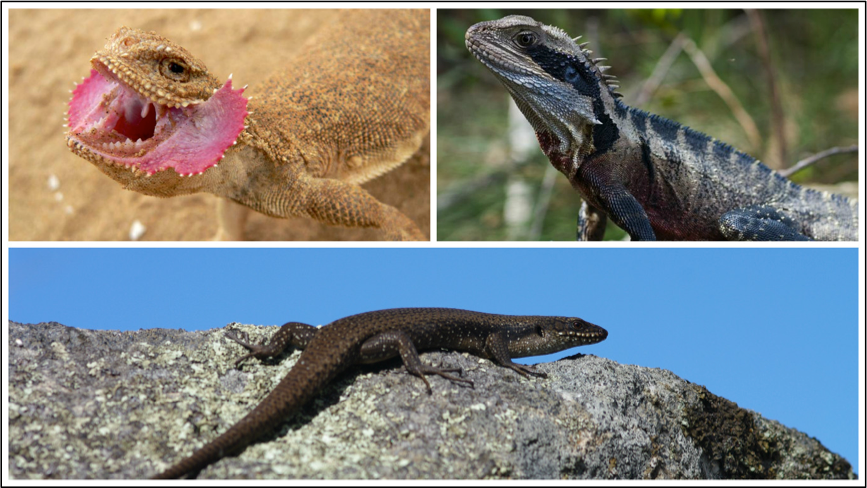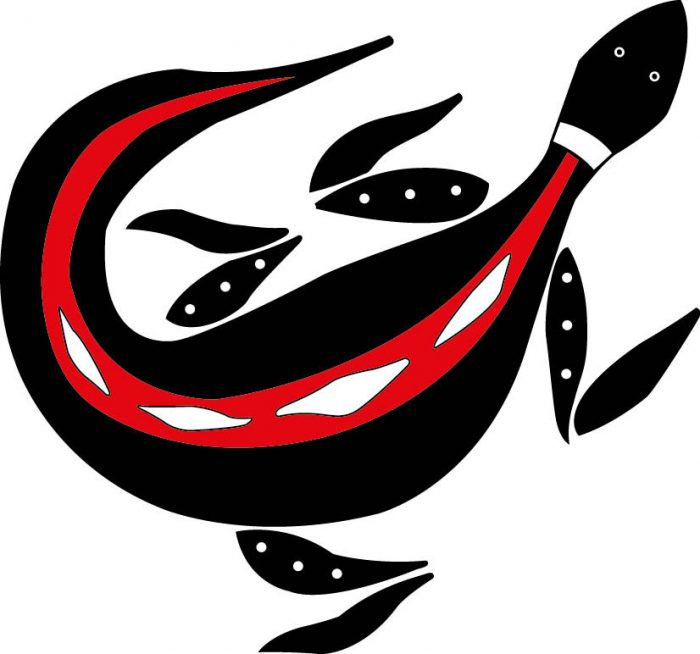On 14 August 2016, a small contingent of the Lizard Lab headed from Sydney, Australia to Hangzhou, China for the 8th World Congress of Herpetology. Our fearless leader, Martin Whiting, as well as James Baxter-Gilbert and I were the Lizard Lab’s representatives that hopped across the pond for this international conference adventure. And what an adventure it was!
This is the only conference I have ever been to (or even heard of) where the conference location was changed 48 hours before everything started! Not only that, WCH8 was moved from Hangzhou to Tonglu – a city 100 km away. What a challenge for the conference organizers – I think I would have freaked if I were on the organizing committee. That being said, once James and I arrived in Hangzhou everything went smoothly. A bus picked up all the delegates from the airport, and swiftly got them all to Tonglu. I couldn’t help but take in the beautiful, mountainous countryside during the bus ride. James even spotted a Water Buffalo in one of the rivers as we passed!

The view during the bus ride from Hangzhou to Tonglu
When we arrived at Tonglu, we found out where the conference was now being held: at the legendary Legend Hotel. Immediately, a chaotic registration team got us sorted for the conference lickety-split. James and I were able to explore the riverside park beside the hotel, and were able to spot 6 new bird species!
Our Riverside Bird List
(1) Spotted Dove (Streptopelia chinensis)
(2) Brown Shrike (Lanius cristatus)
(3) Great Tit (Parus major)
(4) Blue whistling thrush (Myophonus caeruleus)
(5) White wagtail (Motacilla alba)
(6) Red-rumped Swallow (Hirundo daurica)
The next morning, the conference got off to a science-tastic start with three plenaries; first, by Barry Sinervo on “The current reptile and amphibian biodviersity crisis” was a call-to action that I am sure all the herpetologists in the audience heard. In the second, Kate Sanders inspired the audience with her research focusing on an under-studied taxa, sea snakes. And third, Yi-ming Li gave a great plenary about the “Dynamics of species range: roles of Climate, Topography, and Human Activities”. Following up the three plenaries were 5 concurrent sessions of great herpetological talks! It was a constant challenge throughout this meeting to make difficult decisions about what talks to see – I always find myself wishing I could clone myself at large international conferences like these. Just so I can maximize the amount of information I can absorb!
The second day of the conference was started with two amazing plenaries; the first by Krystal Tolley from South Africa about “The influence of changing climate, fragmenting forest, and spreading savanna on the biogeography of African reptiles”. Man, this presentation was some eye-candy for any herper – Krystal Tolley’s photos of African chameleons and vipers was utterly captivating! Indraneil Das delivered the second plenary about “Ethnoherpetology: perspectives and conservation” which encouraged the audience to consider how cultures perceive and talk about herps and utilize this information in our conservation strategies. Today, all the members of the Lizard Lab gave their presentations – Martin Whiting started the lab off talking about why Phrynocephalus mystaceus has flaps? What do they use them for – sexual selection or anti-predator defense? I followed up Martin’s great talk, and presented my PhD research on if social environment affects development of tree skink (Egernia striolata) personality and learning ability. James finished up the lab talks, and presented on the adaptations Water Dragons (Intellagama lesueurii) exhibit in the urban environments of Sydney, Australia. It was great to have the opportunity to talk with colleagues all over the world about my research, and I always love the part where I can get constructive feedback and suggestions from experts! The second day of the conferences was a long one, because there was also the poster session in the evening. There were a lot of great posters, as always it was really fun to chat with everyone about their work. There were even a couple posters on social systems and parental behaviours of lizards – so I was really in my element. A fun fact I learnt was that Liolaemus sp. have been observed carrying around their young on their back! The benefit of this? Well, I guess there is just more research that needs to be done.

Martin’s talk was on his research on Phrynocephalus mystaceus in China (top left). James’ talk was on Intellagama lesueurii (top right) and mine was on Egernia striolata from Australia.

During the poster session I learnt that some Liolaemus sp. carry their young on their backs – what a great photo!
On the third day of the conference, we had a day off! Again, WCH8 kept surprising me, because this was the first conference I have been to with a break in the middle. At first, I was a bit disappointed because I wanted to keep seeing presentations, and learning from herpetological experts. But, we certainly made the most of the day off – we went exploring in the nearby Dajishan National Forest Park. So, of course, when you get a bunch of herpers together – they look for herps! We found a lot of amazing critters (such as piebald odorus frogs, Odorrana schmackeri, and a whip scorpion) during the day, but we were very disappointed we found no snakes. However, we did find some shed snake skins around brickwork. When we headed back into Tonglu, James and I wandered around the town and found a little food market. It was neat to see a lot of vegetables, and species of fish that I had never seen before! Due to our bad luck finding snakes during the day, we decided to return in the evening and head back to the base of the national forest (nobody is allowed in the park overnight) to look for snakes in the evening – joyfully, we found three species of snake (as well as lots of geckos and toads)! So, now, I am a big fan of the day off in the middle of a conference. As I could not spend a longer period of time in China due to research responsibilities, I loved having a chance to explore the nearby natural areas and culture. Especially when you have already travelled so far for a conference. It also provided a much-needed brain-break to process all the information we had already learnt.

We had a great adventure in Dajishan National Forest Park, where during the day we saw many skinks from the Sphenomorphus indicus complex (middle left, and bottom middle). Our first herps of the day were tadpoles in a water fountain (middle)! And we saw lots of frogs, my favourite being Odorrana schmackeri (bottom left).

After night had fallen, we returned to the base of the mountains and found a Many-spotted Cat-eye Snake (Boiga multomaculata; top left), a Mandarin Trinket Snake (Euprepiophis mandarinus; top right), a Red Large-Toothed Snake (Dinodon rufozonatum; bottom right). We also found lots of geckos (Gecko sp.; bottom left)!
On the fourth day of the conference, we jumped right back into the science with two plenary speakers again! The highlight for me was Paula Cabral Eterovick’s talk on how it is a “challenging world for frogs”. She gave a great talk about her research on the biology and threats facing South American tadpoles, and I found her experimental approach fascinating! After a full day of 5 concurrent sessions, in the evening there was a silent auction and the presentation of the 2020 WCH bids. All the locations looked amazing – Australia, New Zealand, Kenya and Hungary! But, in the end, New Zealand won and it looks like the world’s herpetologists will be heading there in 4 years.
The final day of the conference was again, jam-packed with amazing herpetological tales and science. Two great plenaries started off the day again, with a great talk by Corinne Richard-Zawacki about her research on the mechanisms of speciation in the strawberry poison dart frog. Franceso Ficetola followed her up by discussing his research on the “Biogeographical Patterns of Amphibians and Reptiles: Past, Present and the Humans”. Both were great talks that gave an honest and genuine account of their research on reptiles. The day, and conference, finished off with a Banquet, which consisted of multiple courses of amazing food, and some very potent Chinese alcohol for toasts! It was a great last chance to visit with old colleagues from Canada, friends from Australia, and folks that I met from all around the world during the conference.

The WCH8 contingent from the Lizard Lab (me, Dr. Martin Whiting, and James Baxter-Gilbert) enjoying the final conference banquet.
Overall, WCH was a conference chock-full of inspirational herpetological research. I always feel lucky to be able attend this conference, and I already have a countdown on my phone for WCH9 in New Zealand. I really appreciated the effort the WCH committee put into ensuring equal representation between sexes, as well as zoogeographic regions in the plenary speakers. It truly made the conference feel like an international meeting that included all people from all over the world! A take home message from the conference that I didn’t expect was that ‘scientists need to be more socially conscious’. As with great power (knowledge), comes great responsibility to lead the way in positive global change (whether it be in education or conservation) in the actions we take everyday. But, simply, WCH8 was a chance to immerse myself, totally geek out, and be inspired by what I love most – the wonderful world of reptiles and amphibians. I walked away wanting to be able to study all the herps everywhere – a perfect conference for a herp nerd like me.

The WCH8 conference photo, taken on the first day of the conference, in the very fancy banquet room!
